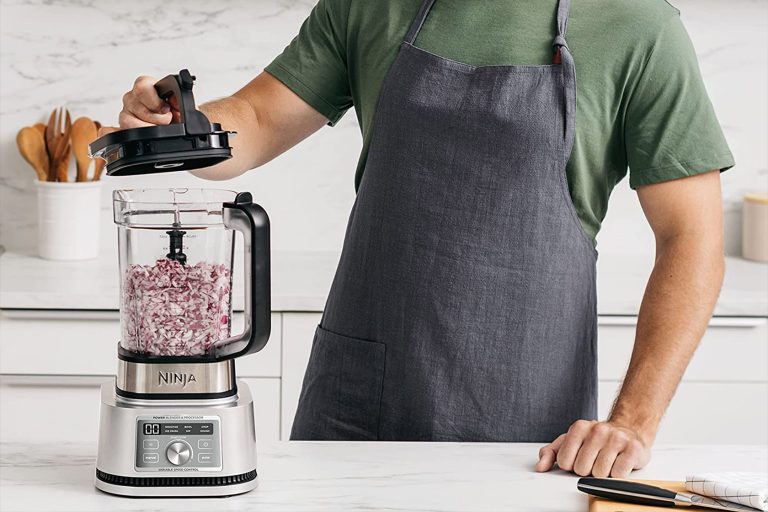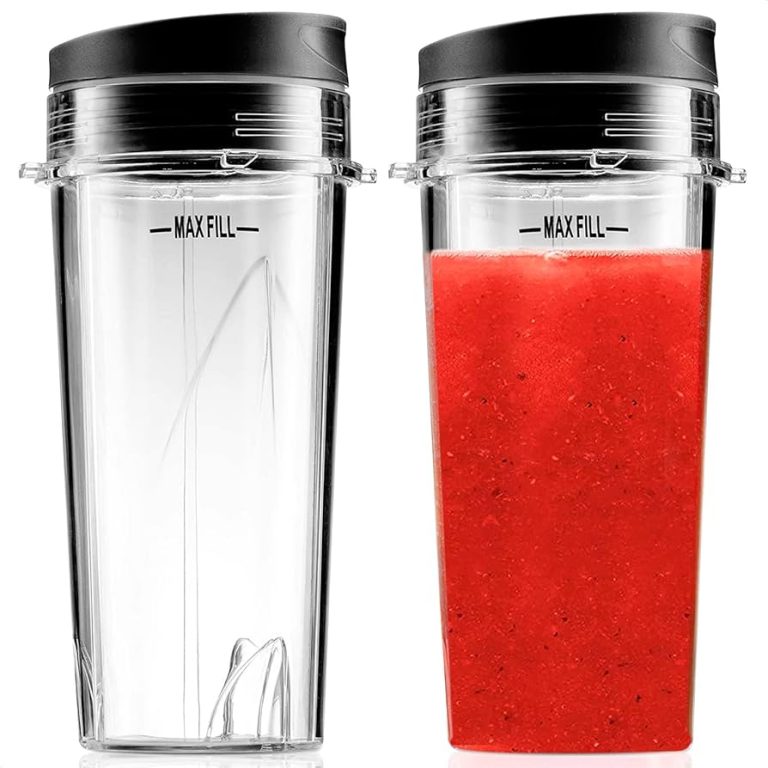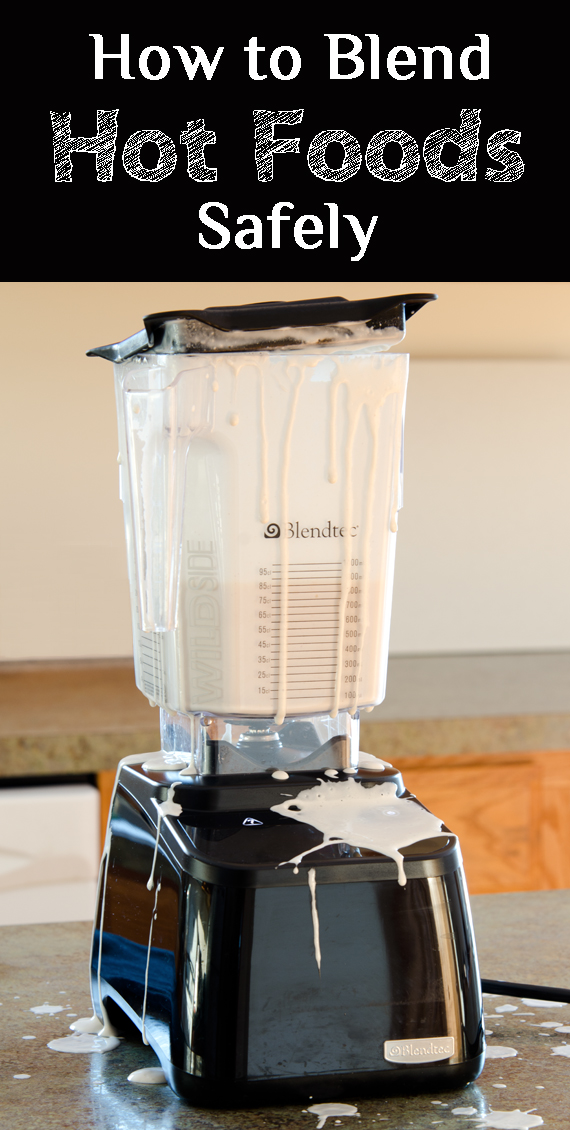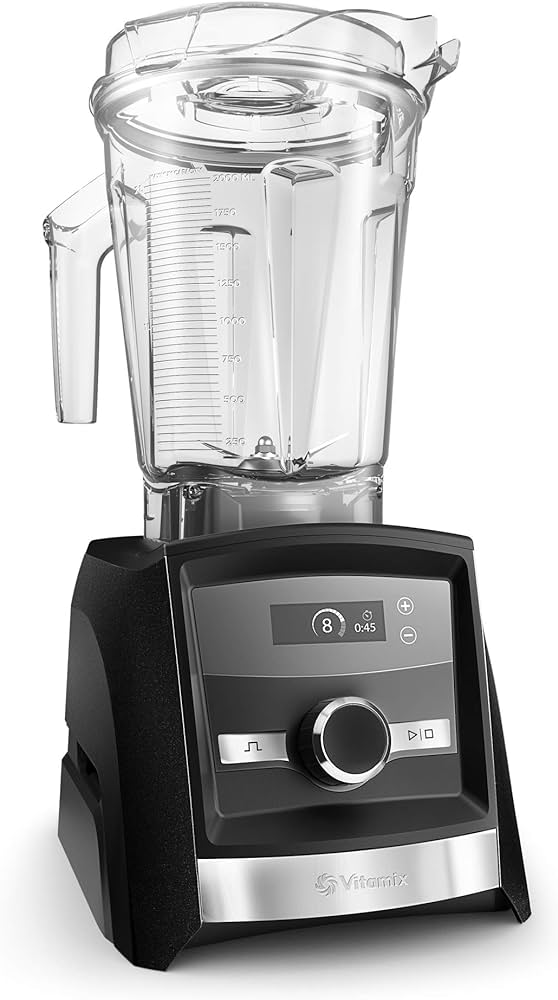Are Ninja Blenders Quiet? Unveiling the Truth!
Ninja Blenders are not known for being especially quiet. They often produce a noticeable level of noise during operation.
Ninja Blenders have carved out a reputable niche in the kitchen appliance market, recognized for their blending prowess and durability. These powerful machines efficiently tackle everything from frozen fruits to ice, earning them a loyal following amongst smoothie enthusiasts and home chefs alike.
Despite their many advantages, one trade-off for their high performance is the sound level; a Ninja Blender typically generates more noise compared to some high-end blenders that employ noise reduction technologies. Prospective buyers should consider the noise factor if a low-sound environment is a priority during meal prep or daily routines. While they are not the quietest on the market, Ninja Blenders still offer a compelling blend of functionality and power for those who prioritize performance over acoustic comfort.
The Truth About Ninja Blenders
Ever wondered how quiet Ninja Blenders really are amidst the roar of a kitchen at peak hours? We’re slicing through the myths to uncover the truth about Ninja Blenders, their noise level, and how they stack up against the competition.
The Evolution Of Blender Technology
Blending technology has transformed dramatically over the years. From the early, rumbling machines that shook kitchen counters to today’s high-powered, multifunctional devices, blenders have undergone significant upgrades in both performance and design.
- Initial models were noisy and basic in functionality.
- Subsequent innovations introduced variable speed controls and advanced blade designs.
- Modern blenders prioritize efficiency and user experience, including noise reduction.
Traditional Blender Noise Levels
Historically, blenders were notorious for their loud operation. With noise levels often climbing above 90 decibels, they could rival the sound of a lawnmower, making kitchen conversations a challenge.
| Blender Type | Average Noise Level (decibels) |
|---|---|
| Traditional Blenders | 88-92 |
| Modern Blenders | 80-85 |
Innovation In Blender Designs
Innovative design changes have led to quieter operation without compromising on blending power. Rubber mounts, sound-dampening enclosures, and blade optimization contribute significantly to reducing noise output while maintaining the efficiency blender users expect.
- Rubber Mounts: Absorb vibrations and reduce noise transmission.
- Enclosures: Trap sound within the blender, lessening the noise.
Introduction Of Ninja Blenders
Ninja Blenders entered the market with a mission to disrupt the status quo. Emphasizing both power and quietness, these blenders boast a unique blend of technology and design to offer a quieter blending experience. Below are key features that set Ninja Blenders apart:
- Sophisticated motor technology for efficient and quieter blending.
- Advanced blade design, reducing noise and improving blending results.
- Strategic use of insulating materials to minimize sound.
Ninja’s commitment to quieter blending is clear in their product lineup, which promises a balance between a calm kitchen atmosphere and the capability to tackle any blending task.

Credit: www.amazon.com
Understanding Ninja Blender Noise Levels
Ninja Blenders have become a staple in kitchens around the world, revered for their blending power and efficiency. However, one common question arises: Are Ninja Blenders quiet? This section delves into the noise levels of Ninja Blenders, offering insight into what users can expect in terms of auditory impact during operation.
Decibel Levels And Its Significance
Understanding the noise level of kitchen appliances is key to ensuring a comfortable environment while cooking and blending. The decibel (dB) scale measures sound intensity, with a whisper around 30 dB, a normal conversation at about 60 dB, and a motorcycle engine roaring at 95 dB. Ninja Blenders, known for their powerful motors, tend to operate in a range that’s noticeable yet bearable. Specific models vary, with decibels typically ranging from 70 to 90 dB, depending on the blender’s function and speed setting. To put this in perspective, the noise level is comparable to a hairdryer or a vacuum cleaner.
Measurement Of Blender Noise
Measuring the noise output of a blender involves using a sound level meter placed at a standard distance from the source. It’s important to note that the perception of noise can also be affected by the acoustics of the room in which the Ninja Blender is operated. A soundproof kitchen might reduce the perceived blender noise, while an echoey space might amplify it. Ninja Blender noise tests in controlled environments provide potential buyers with accurate and consistent noise level readings.
Factors Affecting Noise Production
- Motor Power: Higher wattage often results in higher noise levels during the blending process.
- Blade Design: Blades engineered for efficiency can minimise noise by streamlining the blending process.
- Build Quality: Blenders with solid construction and vibration-damping bases tend to produce less noise.
- Ingredients: Tougher ingredients might require more power and time to blend, potentially increasing noise.
The Ninja Blender design incorporates features to address noise, including sturdy bases and innovative blade technology, to keep the sound levels as unobtrusive as possible within the powerful blending capability.
Comparative Analysis With Other Blenders
When it comes to noise levels, Ninja Blenders often hold their ground well against competitors. A comparative study indicates that while they might not be the quietest on the market, they balance performance and noise quite effectively. Here’s how Ninja Blenders stack up against other leading brands:
| Blender Brand | Average Decibel Level (dB) |
|---|---|
| Ninja | 70-90 dB |
| Brand X | 60-80 dB |
| Brand Y | 75-95 dB |
| Brand Z | 65-85 dB |
Ninja Blenders offer a sweet spot between functionality and tolerable noise levels, making them a smart choice for those seeking efficiency without undue disruption.
Ultimately, noise levels are an important consideration for any buyer. While Ninja Blenders may not claim the title of the quietest blenders on the market, they provide a compelling blend of power, functionality, and bearable noise levels that many find to be a suitable trade-off for their culinary needs.
Are Ninja Blenders Quiet?
When it comes to kitchen appliances, noise can be a significant consideration. Among the many brands, Ninja blenders have made a name for themselves, but how do they stack up in terms of quiet operation? Let’s delve into the world of Ninja blenders and evaluate their performance, assess the noise levels during use, consider what users have to say, and clear up any misconceptions about their noise output.
Performance EvaluationPerformance Evaluation
Ninja blenders are renowned for their powerful motors and efficient blending capabilities. These blenders are designed to tackle a wide range of tasks – from crushing ice to pureeing vegetables – with ease and precision. Of paramount importance:
- The blade design contributes to their exceptional performance.
- They boast multiple speed settings to give users control over the blending process.
- High-performance models are equipped with advanced technologies for a smoother blend.
Noise Levels During Operation
When discussing noise levels, it’s crucial to understand that power and noise often go hand-in-hand. While Ninja blenders are designed to be as efficient as possible, they do generate noise during operation. Specific models come with noise reduction features, such as:
- Sound-dampening enclosures that significantly reduce the noise output.
- Vibration dampening technology to minimize the noise during use.
- Strategic blade design to lessen the overall sound level.
This is best exemplified by comparing decibel levels recorded from various models under similar conditions – a practical approach to gauge noise output.
User Feedback and ExperiencesUser Feedback And Experiences
Real-world experiences are invaluable when assessing a product’s noise levels. A diverse range of user feedback indicates that Ninja blenders:
- Can be loud, especially on the highest settings when tackling hard ingredients.
- Are generally quieter on lower settings or when used with softer ingredients.
- Have certain models that are appreciated for quieter operation compared to competitors.
Online reviews and testimonies often highlight the noise aspect, emphasizing its manageability in everyday kitchen usage.
Addressing MisconceptionsAddressing Misconceptions
There are some common myths when it comes to Ninja blenders and their noise levels. Firstly, not all powerful blenders are excessively noisy; many Ninja models are engineered to balance power and noise. Secondly, the belief that blenders can only be quiet if they are less powerful isn’t accurate. Ninja’s design innovations show that efficiency doesn’t have to sacrifice quietness. Lastly, considering operational noise within the context of its environment is crucial; a Ninja blender may seem louder in a smaller, more enclosed kitchen.
Tips For Noise Reduction With Ninja Blenders
Seeking to blend up your favorite smoothie or concoction without disturbing the peace in your home? Ninja blenders are renowned for their blending prowess, but they can sometimes be a little loud. Fear not! The following tips for noise reduction with Ninja Blenders can help you maintain a serene environment while indulging in your culinary quests.
Utilizing Noise Dampening Techniques
To minimize the noise produced by your Ninja blender, consider adopting some noise dampening techniques. Place your blender on a steady and soft surface, like a silicone mat or a folded kitchen towel. This can absorb vibrations and reduce sound transmission. Also, experiment with enclosing the blender in a soft barrier while in use. Consider a blender enclosure or a sound shield if available for your model, but ensure there is ample air circulation to prevent overheating.
Proper Usage For Quieter Blending
Correct operation can also play a vital role in noise reduction. Start by using your blender at the lowest speed that effectively achieves the desired texture, ramping up only as needed. You might also want to prepare your ingredients before blending—pre-cut items blend quicker, and soaking hard items such as nuts can significantly reduce blending noise.
Maintenance And Care For Noise Control
Regular maintenance is crucial for keeping your Ninja blender running smoothly and quietly. Ensure that the blades are sharp and in good condition, as dull blades can cause the motor to work harder and louder. Check for any loose parts or seals that might create additional noise and address them promptly. Consistent cleaning after use, following the instructions in your blender’s manual, also contributes to optimal, quiet operation.
Expert Recommendations For Noise Minimization
- Upgrade to a quieter model: If noise is a significant concern, consider investing in a higher-end Ninja blender model designed for quieter operation.
- Blending schedule: Plan your blending times around your household’s quieter periods, which can help dilute the perceived noise level.
What Are the Noise Levels of Ninja Blenders, and Can Their Cups Be Used in the Microwave?
The noise levels of ninja blender cups microwavable vary but are generally quieter than traditional blenders. However, it’s essential to check the specific model’s noise level before purchasing. Ninja blender cups can generally be used in the microwave, but it’s important to verify the specific instructions for each cup to avoid damage.
Frequently Asked Questions Of Are Ninja Blenders Quiet
How Loud Are Ninja Blenders Typically?
Ninja Blenders are known for their powerful performance, but they can be loud during operation. The noise level can vary between models, but on average, they produce around 69 to 88 decibels. This is comparable to the sound of a vacuum cleaner.
Can You Reduce Noise From Ninja Blenders?
To reduce noise from Ninja Blenders, place them on a mat or towel to dampen vibrations. Operating them away from walls which reflect sound also helps. Choosing a model with built-in noise reduction technology can make a significant difference.
Are There Quiet Models Of Ninja Blenders?
Yes, Ninja offers models with noise reduction features. The Ninja Professional Plus Blender with Auto-iQ is designed to be quieter than earlier models, integrating noise-suppressing technology to minimize sound during operation.
What Factors Affect Ninja Blender Noise Levels?
The noise level of a Ninja Blender is influenced by the motor power, speed setting, and design. High-powered models or those running at maximum speed tend to be noisier. Additionally, the type of food being blended can also affect the noise.
Conclusion
Wrapping up, Ninja blenders offer a balance between power and noise level. While not whisper-quiet, they perform effectively without excessive disruption. To enjoy smoothies without waking the household, consider a Ninja; it’s a sound choice for moderate sound and great results.
Choose wisely for a quieter blend.






